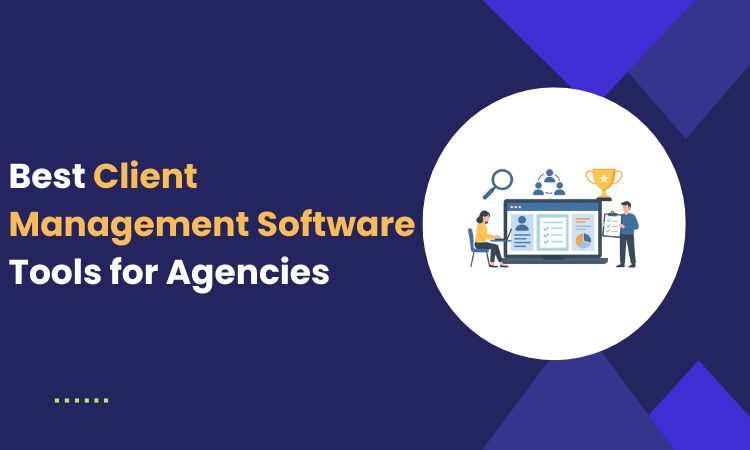Managing multiple clients, projects, and conversations can get messy—fast. That’s where client management software comes in. Designed to simplify communication and streamline workflows, this type of software helps agencies and service providers stay organized, responsive, and in control. If your client work feels scattered across spreadsheets, emails, and notes, it might be time for a better system.
What is Client Management Software?
Client management software is a digital tool that helps businesses track client information, communication history, projects, and deliverables—all in one place. Think of it as your virtual filing cabinet, CRM, and task board rolled into a single interface.
From the first interaction to post-sale support, client management tools help you store data, assign tasks, monitor progress, and collaborate with clients in real time. Whether you’re a solo freelancer or part of a growing agency, this software ensures you never lose track of who said what—or what’s due next.
Many small businesses now rely on client management software to reduce errors, improve transparency, and deliver a better client experience without the stress of juggling multiple platforms.
Benefits of Using Client Management Software
Still wondering if you need it? Here’s what modern client management software brings to the table:
– Centralized Communication: All messages, files, and updates live in one thread—no more digging through inboxes.
– Streamlined Onboarding: Automate intake forms, contract signing, and kickoff steps to reduce admin time.
– Better Project Visibility: View timelines, milestones, and assigned tasks across all active clients.
– Improved Collaboration: Clients can view progress, give feedback, and stay in the loop—without needing to ask.
– Data Security: Safeguard sensitive client data with encryption and permission settings.
– Time and Cost Efficiency: Automating repetitive tasks frees you up to focus on high-value work.
For growing agencies, an all-in-one platform for agencies can make an even bigger impact by consolidating proposals, billing, task tracking, and reporting into a single ecosystem.
How to Use Client Management Software
Here’s a simple breakdown of how to get started:
Step 1: Set Up Your Client Profiles
Input all your client data—contacts, past conversations, contract details, and project scopes. Most platforms let you import from spreadsheets or CRMs.
Step 2: Build Workflows
Define your standard process: onboarding, project kickoff, milestone tracking, billing, and support. Templates help keep this consistent across all clients.
Step 3: Assign and Track Tasks
Use boards or task lists to assign responsibilities to team members. Link tasks to client projects for better context and visibility.
Step 4: Communicate in One Place
Invite clients to a branded portal where they can message you, view updates, and leave feedback directly on deliverables.
Step 5: Automate Routine Actions
Set up automated reminders, invoice generation, follow-up emails, and progress updates. This reduces manual work and minimizes delays.
Step 6: Monitor and Improve
Use reporting tools to measure client satisfaction, project timelines, and profitability. Adjust your processes accordingly.
Tips for Choosing the Right Software
Not all platforms are equal. Here’s what to look for when choosing a solution:
– Ease of Use: Your team and clients should be able to navigate it without needing a manual.
– Customization: Tailor workflows, forms, and templates to match your business.
– Client Experience: Look for client portals, branded interfaces, and self-service options.
– Integration Options: Ensure it connects with tools like your calendar, email, payment processor, or project manager.
– Scalability: Choose software that can grow with your business—not limit it.
Conclusion
Client management software isn’t just a luxury—it’s a necessity for agencies that want to stay organized, efficient, and professional. From onboarding to delivery to follow-up, the right tool helps you manage every client interaction with clarity and confidence.
Ready to ditch scattered systems and streamline your workflow? Start by exploring tools that combine all these features into a single, agency-friendly dashboard.
FAQs
Q1: Is client management software suitable for freelancers?
Yes. Even solo operators benefit from automated workflows and organized client data.
Q2: Can it integrate with billing and invoicing tools?
Most quality platforms include or support integrations with invoicing, payments, and accounting tools.
Q3: Is client data secure?
Yes—top platforms offer encryption, backups, and access controls to protect sensitive information.
Q4: What’s the cost range?
Pricing varies, but most platforms offer monthly subscriptions based on user count or feature sets.
Q5: How long does setup take?
You can be up and running in a day or two, especially with templates and client import tools.
- Best Client Management Software Tools for Agencies - July 21, 2025
- How a Gamertag Generator Helps Build Your Gaming Identity - July 3, 2025
- Namelix: AI Business Name Generator Explained Simply - May 20, 2025
